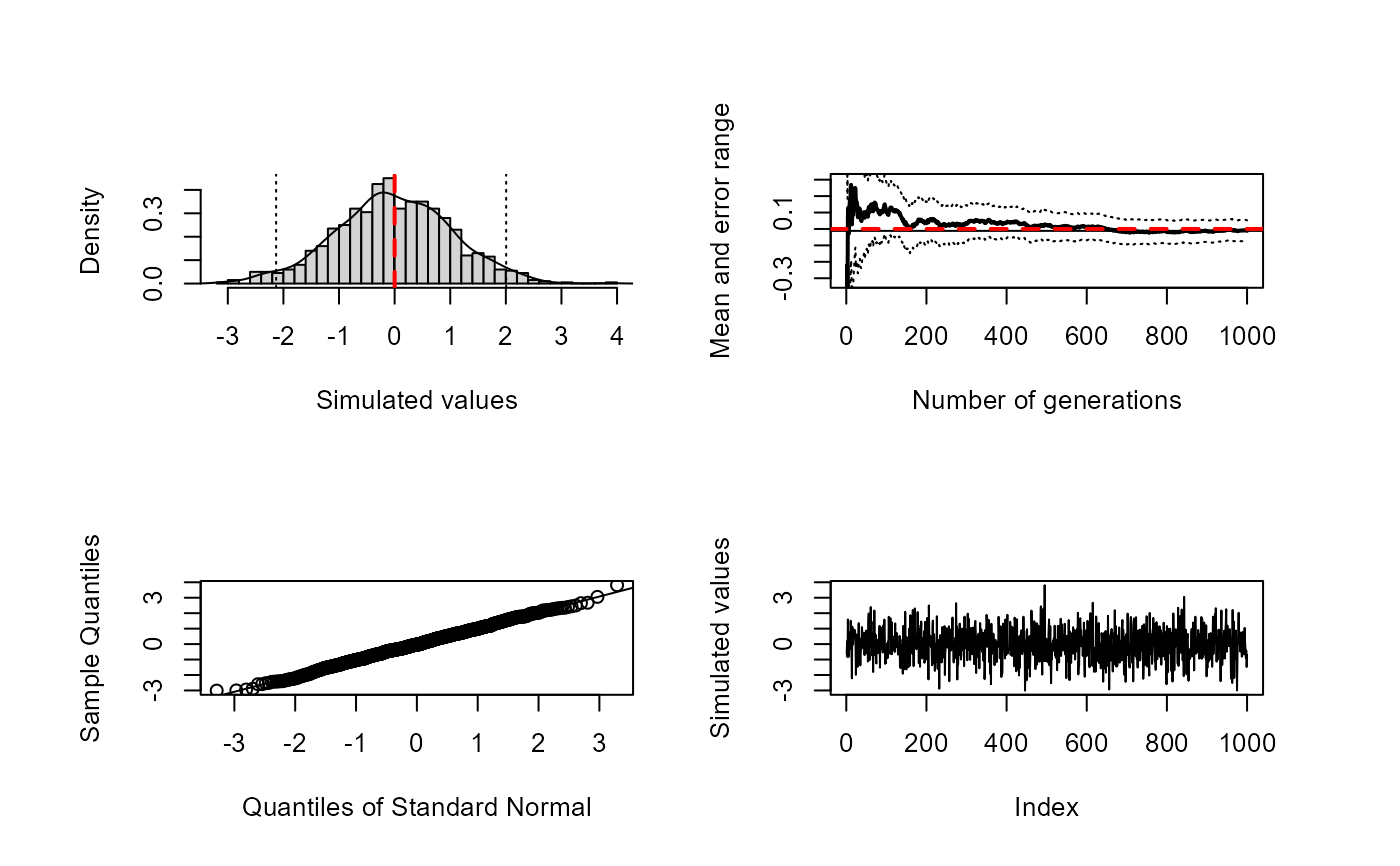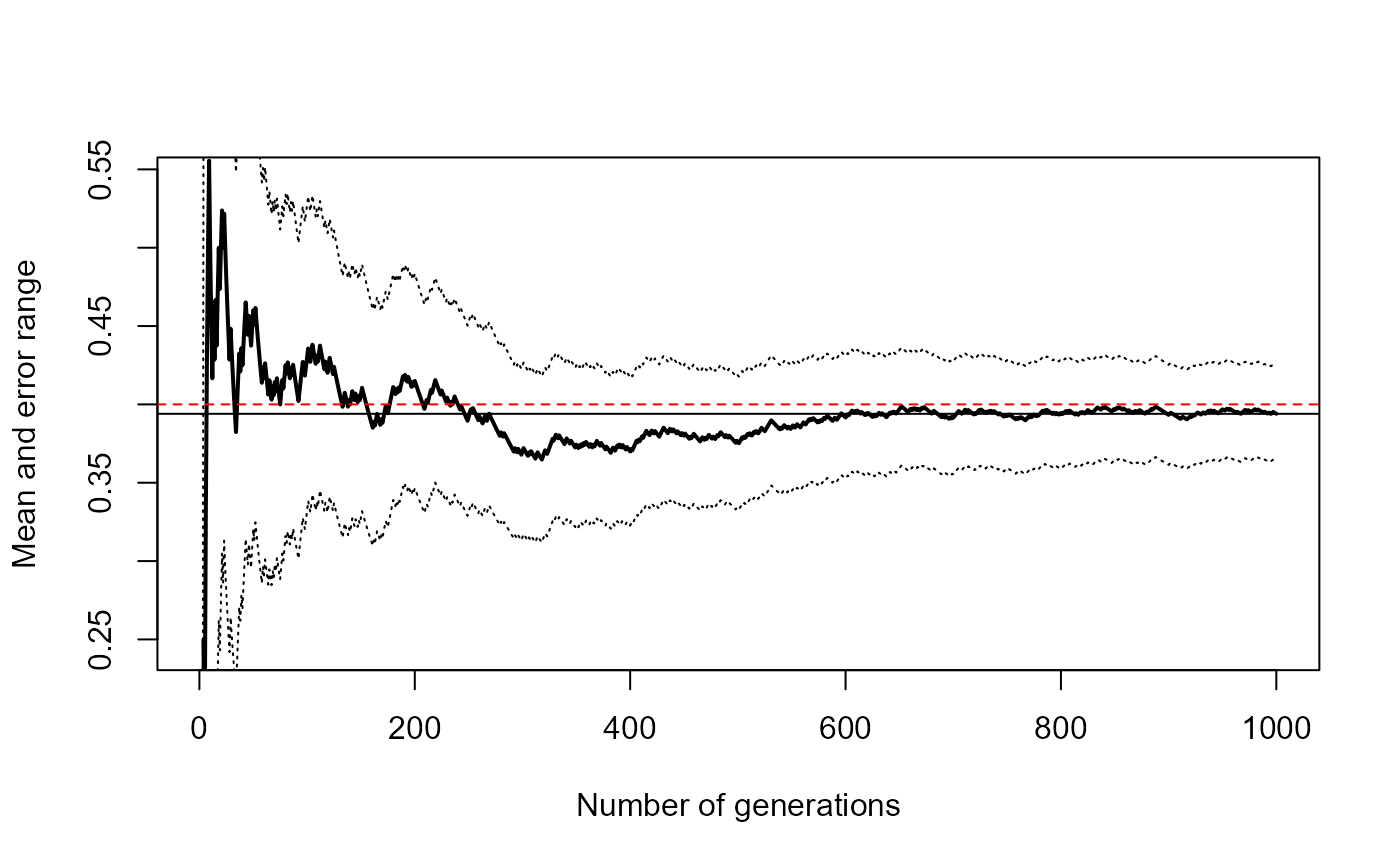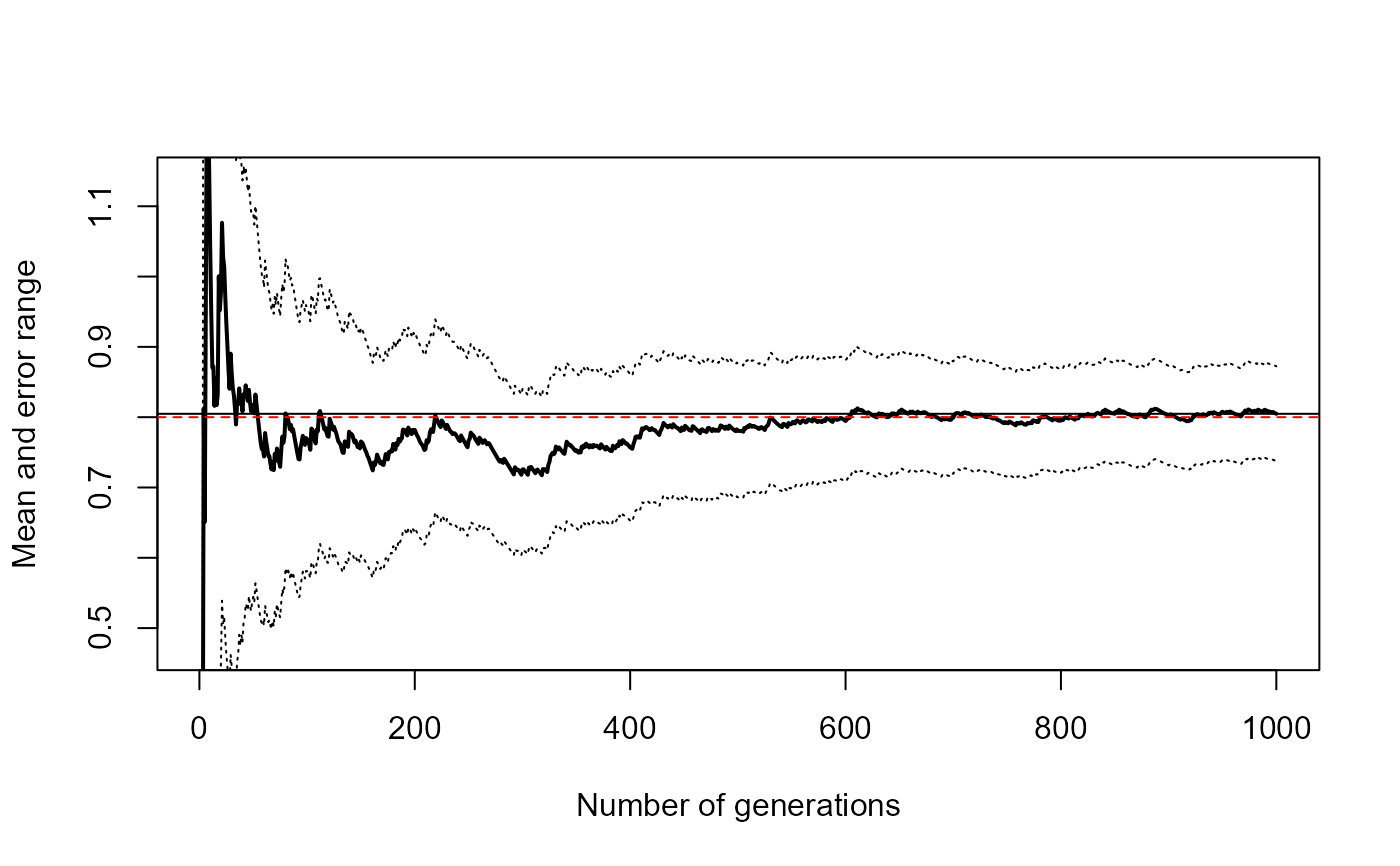mc.plot() draws the approximation of the distribution, the
convergence plot (by calling conv.plot()), a normal QQ plot
and a sequential plot.
conv.plot() draws a convergence plot.
mc.integral() integrates an one-dimensional function
over a bounded interval using classic Monte-Carlo integration and draws
the corresponding convergence plot.
mc.plot(
x,
level = 0.95,
true.value = NULL,
main,
omd = c(0.05, 0.95, 0.01, 0.95),
...
)
conv.plot(
x,
level = 0.95,
lty = c(conv = 1, value = 1, error = 3),
lwd = c(conv = 2, value = 1, error = 1),
ylim = NULL,
xlab = "Number of generations",
ylab = "Mean and error range",
...
)
mc.integral(fun, a, b, n, level = 0.95, plot = TRUE, ...)Arguments
- x
the simulated values.
- level
the confidence level required.
- true.value
the theoretical value.
- main
an overall title for the plot.
- omd
a vector of the form
c(x1, x2, y1, y2)giving the region inside outer margins in normalized device coordinates (i.e. fractions of the device region).- ...
further arguments passed to other functions (e.g. to
conv.plot()).- lty
a vector of line types (of the form
c(conv, value, error)).- lwd
a vector of line widths (of the form
c(conv, value, error)).- ylim
the y limits of the plot.
- xlab, ylab
the axis titles.
- fun
an one-dimensional function to be integrated on [a, b]
- a, b
the limits of integration (must be finite).
- n
number of uniform generations.
- plot
logical; if
TRUEa convergence plot is draw.
Value
Return, invisibly in the case of plot functions, the approximation by simulation (the arithmetic mean) and the corresponding error range (half width of the confidence interval).
Examples
set.seed(1)
teor <- 0
res <- mc.plot(rnorm(1000, mean = teor), true.value = teor)
 res
#> $approx
#> [1] -0.01164814
#>
#> $max.error
#> [1] 0.06414357
#>
set.seed(1)
p <- 0.4
res <- conv.plot(rbinom(1000, size = 1, prob = p))
abline(h = p, lty = 2, col = "red") # Theoretical value
res
#> $approx
#> [1] -0.01164814
#>
#> $max.error
#> [1] 0.06414357
#>
set.seed(1)
p <- 0.4
res <- conv.plot(rbinom(1000, size = 1, prob = p))
abline(h = p, lty = 2, col = "red") # Theoretical value
 res
#> $approx
#> [1] 0.394
#>
#> $max.error
#> [1] 0.0303005
#>
fun <- function(x) ifelse((x > 0) & (x < 1), 4 * x^4, 0)
curve(fun, 0, 1)
abline(h = 0, lty = 2)
abline(v = c(0, 1), lty = 2)
res
#> $approx
#> [1] 0.394
#>
#> $max.error
#> [1] 0.0303005
#>
fun <- function(x) ifelse((x > 0) & (x < 1), 4 * x^4, 0)
curve(fun, 0, 1)
abline(h = 0, lty = 2)
abline(v = c(0, 1), lty = 2)
 set.seed(1)
mc.integral(fun, 0, 1, 1000)
#> $approx
#> [1] 0.8048108
#>
#> $max.error
#> [1] 0.06752324
#>
abline(h = 4/5, lty = 2, col = "red") # Theoretical value
set.seed(1)
mc.integral(fun, 0, 1, 1000)
#> $approx
#> [1] 0.8048108
#>
#> $max.error
#> [1] 0.06752324
#>
abline(h = 4/5, lty = 2, col = "red") # Theoretical value
 set.seed(1)
mc.integral(fun, 0, 1, 5000, plot = FALSE)
#> $approx
#> [1] 0.8142206
#>
#> $max.error
#> [1] 0.03028194
#>
set.seed(1)
mc.integral(fun, 0, 1, 5000, plot = FALSE)
#> $approx
#> [1] 0.8142206
#>
#> $max.error
#> [1] 0.03028194
#>